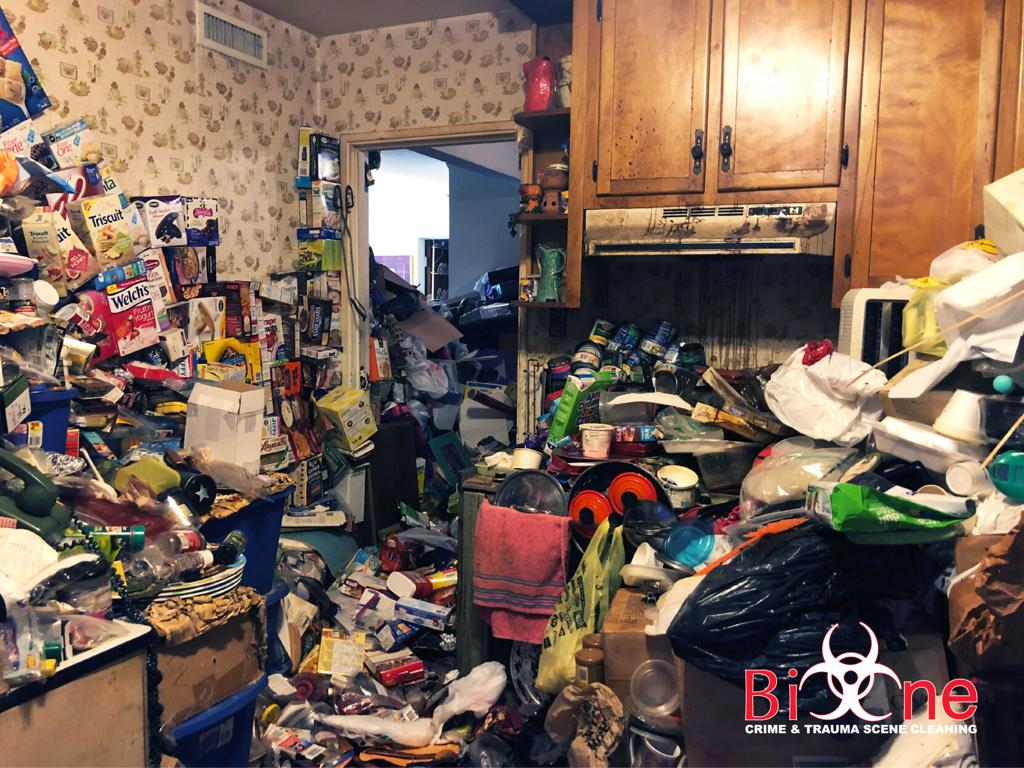Reporting a hoarder house involves documenting the situation with photos or videos and noting relevant details such as the address and extent of hoarding. Next, determine the responsible authority, which could be local government agencies like the housing department or health department. Make a report either by phone or online, providing specific details about the property’s condition and any safety hazards.
Follow up with authorities if necessary and respect privacy while offering support to those involved. This process ensures that appropriate action is taken to address the hoarding situation while considering the well-being of individuals affected.
How to document a hoarder house for reporting?

Documenting a hoarder house for reporting purposes requires thoroughness, sensitivity, and professionalism. Here’s a step-by-step guide on how to do it effectively:
- Get Ready: Before going inside, make sure you’re mentally prepared.
- Bring Supplies: Take things like a camera, gloves, and a mask to stay safe.
- Ask Permission: Make sure it’s okay to go in, maybe ask the homeowner or someone in charge.
- Look for Dangers: Check for anything that could be dangerous, like sharp objects or things that might fall.
- Start Outside: Take pictures of the outside of the house to see how it looks.
- Go Room by Room: Look at each room carefully and take pictures. Notice if it’s messy or if there are things that could cause problems.
- Be Nice: Remember to be respectful to the people who live there. Don’t share their private stuff with others.
- Take Notes: Write down what you see, like what’s messy or if there are any bad smells.
- Tell Someone: Let adults know what you found. They can help fix any problems.
- Check Back Later: Make sure things are getting better after you tell someone.
- Keep Secrets: Don’t tell anyone else about what you saw. It’s important to keep it private.
What authority handles hoarding reports?

The authority responsible for handling hoarding reports can vary depending on the jurisdiction. In many cases, local government agencies such as city or municipal code enforcement departments, health departments, or social services may handle hoarding reports. In some regions, there may be specialized task forces or teams specifically dedicated to addressing hoarding situations, often involving collaboration between various agencies such as fire departments, mental health services, and social services.
If you’re dealing with a hoarding situation and need to report it or seek assistance, it’s best to contact your local government offices or authorities to inquire about the appropriate procedures and agencies involved in addressing hoarding cases in your area. They can provide guidance on how to proceed and connect you with the relevant resources and support services.
How to report a hoarder house effectively?

Reporting a hoarder house effectively involves several steps to ensure that the authorities can address the situation appropriately. Here’s a guide on how to report a hoarder house effectively:
Document the Situation
Before reporting, gather evidence of the hoarding behavior. Take photos or videos of the property from public areas (avoid trespassing). Document any visible signs of hoarding, such as excessive clutter, garbage accumulation, or unsanitary conditions.
Identify the Relevant Authority
Depending on your location, different authorities may handle hoarding cases. Typically, this could involve local government departments such as housing, health, or code enforcement. You can also contact non-profit organizations that specialize in hoarding intervention for guidance.
Contact the Authorities
Reach out to the appropriate authority through their designated channels. This might be a phone call, email, or online reporting form. Provide specific details about the hoarder house, including the address, the nature of the hoarding behavior, and any potential health or safety hazards.
Express Concern for the Individual
If you know the hoarder personally and have a good relationship with them, consider expressing your concerns directly to them in a compassionate manner. Offer support and assistance in finding resources for hoarding disorder treatment. However, ensure your own safety and boundaries are respected.
FAQ’s
What is considered a hoarder house?
A hoarder house is typically characterized by excessive accumulation of possessions, clutter, and often unsanitary living conditions due to difficulty discarding items.
What is the legal definition of a hoarder?
Legally, a hoarder may be defined as someone who accumulates possessions to the extent that it poses a health or safety risk to themselves or others, or violates local housing or sanitation codes.
Why do people have hoarder houses?
People may have hoarder houses due to various factors, including underlying psychological issues such as hoarding disorder, trauma, anxiety, or attachment to possessions.
Can hoarders get in trouble?
Yes, hoarders can face consequences such as eviction, fines, or legal action if their hoarding behavior violates housing or sanitation regulations, poses a safety risk, or causes harm to themselves or others.
What are the 5 levels of hoarding?
The five levels of hoarding, as classified by the International OCD Foundation, range from Level 1 (minimal clutter) to Level 5 (extreme clutter and unsanitary conditions, often rendering the space uninhabitable).
Final Words
Reporting a hoarder house is important for ensuring the safety and well-being of both the individuals living in the hoard and the surrounding community. By documenting the situation, contacting the appropriate authority, and providing specific details, action can be taken to address the hoarding problem.
It’s essential to follow up on the report to ensure that steps are being taken to remedy the situation. Remember to respect the privacy and dignity of those involved, and offer support where possible. Together, we can work towards resolving hoarding issues and creating safer environments for everyone.
